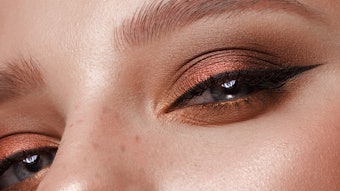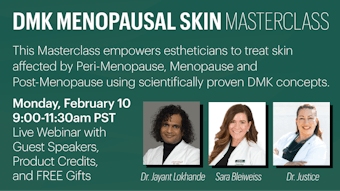
Laser and light therapy treatments are in high demand and remain to be on the list of top esthetic procedures performed, according to American Society for Aesthetic Plastic Surgeons. As the demand for services increases, the need for qualified professionals to perform these services also increases. When it comes to laser and light therapy treatments this can be somewhat of a problem, as many people think it is a quick, easy procedure that anyone can perform. Laws vary by state on who can do these treatments, which tends to be part of the confusion. There are recommended guidelines nationwide, such as yearly laser safety training but not all state regulatory agencies carry this out. It is important to remember that regardless of regulations, lasers are considered medical procedures and must be performed with extreme caution. It is too often that an esthetic center opens their doors without a thorough understanding of regulations or potential complications that can occur from medical laser and light therapy treatments.
I’ve heard too many stories of estheticians, receptionists, wives, etc. being taught to use potentially dangerous medical equipment because the demand is high for these procedures. The devices seem simple enough to use after the representative does a few demos and gives information and application techniques on that particular piece of equipment. The use of lasers and IPL technology in dermatology and esthetic medicine requires practitioners not only to have high levels of training and experience, but also to exercise professional judgment. In spite of all of the precautions taken, the risk of complications and side effects can be reduced but not completely eliminated. If you search online for esthetic laser burns, laser complications or laser mishaps, you will find an endless amount of stories. Therefore, I’d like to share my personal story in hopes that you will learn from one of my life lessons.
Personal Experience
When I first started working with lasers, my educator (representative) provided training on how to use the particular device we had. I have a passion for learning, so I asked many questions, e.g., “What are joules? Why do we choose this amount of joules? What does pulse width mean?” etc. I was told that I was looking too much into it and all I needed to do was follow the chart that was given to me. So, even though I had an uneasy feeling, I did as I was told and brought in family members for practice. I chose my sister, and as I treated her entire body for laser hair removal, staying within the range provided on the chart, I finally reached the back of her thighs. She started crying out that it was burning. I said, “Well it looks fine, and I am in the right setting range so just bear with me, we are almost done.” She called me later that evening in extreme pain. She had second-degree burns on the back of her thighs and had to sit in a bath tub full of ice to ease the discomfort. As a result, the physician I was working with at the time had to treat her with topical steroids. Even worse, the physician delivered the same treatment to her sister on the bikini line with the same dire results. This happened to my sister right before summer and prevented her from being able to expose her thighs at all. She had black block-shaped burn marks up and down the entire back surface of her thighs, which soon turned to hypopigmented blocks. This loss of color due to damage of the melanocytes does not, in most cases, reproduce pigment.
My sister called me every day crying that she was scarred for life and would never be able to wear a skirt or shorts again. Imagine if that happened to her face, which is where many laser accidents occur. The physician, an expert for the laser company, and I decided to do skin rejuvenation on the area to try to retrigger the pigment. This was very frightening for my sister, as the last time I used a laser on her it resulted in causing her extreme pain and she was now suffering the visual consequences of it. She had to have a lot of trust in me (or was just desperate) to let me touch her with a laser again, but I was her sister (another important reason to listen to your clients and build professional relationships with them so that they trust you…but that is a whole other topic). It was very unlikely for that pigment to come back, but thankfully, after several treatments, it returned.
The entire experience was a huge wake-up call. Everything we are doing in the esthetic industry is working toward making clients feel better about themselves. If it wasn’t my sister affected, I don’t think I would have realized how detrimental something like that could be to someone’s self-esteem.
The reason this complication occurred is because I was not properly educated. I am not blaming the trainer, but rather I blame myself for knowing I wasn’t educated enough but being too afraid to say anything for fear that I would lose the job. Being on both ends of the spectrum really made me understand not only how powerful lasers are but how important proper training is, as it can affect someone’s life forever.
Go Beyond the Settings
Following that horrible incident, I was determined to learn everything I could about lasers. I took several classes and went beyond that by reading books, articles, watching treatment videos and shadowing other providers performing laser treatments. As I was learning, I decided to add a two hour laser class into the education I provided medical esthetic industry.
Unbeknownst to me, almost every single student that had been working with lasers was improperly trained. They informed me that they didn’t know any of the things I just taught them. They were trained to simply allow the device to choose the settings based on the client’s information ( i.e., skin type, target, size of the target, etc.) and to follow a general chart.
Advancements in technology make it easy to choose settings for particular targets and skin types, which seems too good to be true. Well, if it seems too good to be true than it likely is. This doesn’t change with the use of equipment developed for medical use. The new developments are great and help reduce the chance of mishaps, but pre-generated settings are there for guidance and are not an “end-all, be-all.”
Pre-generated settings are there for guidance and are not an "end-all, be all."
A laser technician must have clear understanding of why these setting were selected and what they mean. I like to compare it to the use of chemical peels. For example, manufacturers provide instructions for performing chemical exfoliation treatments, but would it be wise to apply an acid you knew nothing about, choose the percentage and pH, again knowing nothing about them, and apply it to a client’s skin because the instructions said it could be used on a skin type IV for up to 10 minutes? The application of treatments is the easy part; however, a true skill set comes from choosing the right modality and settings for the best results. How can we improve the appearance of the skin without knowing the details of what we are using and how it works?
If the user does not know why those settings were chosen by the computer, it could be a very costly mistake. Studies show that although overall incidence of adverse effects after laser hair removal appears to be low and transient, these side effects can be more common when laser hair removal is carried out by untrained personnel.
Individual Regulations
Know and follow individual regulations. Part of this involves knowing what credentials/ licensing are required. Some states only allow medical professionals to perform treatments. Be informed of the training requirements and/or recommendations, and always go above and beyond. Also, determine if a physician needs to do the initial consultation or if he/she is allowed to delegate it to another individual.
Laser Safety
There are several courses that cover laser safety guidelines. Ensure that it is a reputable company. Most institutions follow The American National Safety Institute (ANSI) for lasers. Renew laser safety training at least once a year. Know the equipment being used including maintenance and warning signs of mechanical errors.
Eye protection is the biggest mishap when it comes to safety. Goggles must cover the specific wavelength to be used; one pair does not cover everything Goggles should be in good condition and provide full coverage for the technician and patient.
Know the variables that can lead to a potential burn. The laser treatment area must follow OSHA compliance including the placement of laser safety signs and fire extinguishers, putting away flammable materials, coverage of windows and minimizing specular reflection
Laser Physics and Tissue Interaction
Wavelength is the distance between one peak or crest to the other, and it is associated with depth of treatment, but not the only variable.
Spot size, or the size of the light beam, is also associated with depth of treatment.
Absorption coefficient is how strongly a specific target will be absorbed by the wavelength chosen.
Fluence is the joules (energy) delivered per cm2.
Pulse width is how long energy is delivered; this changes according to skin type and size of target.
Selective photothermolysis is providing enough heat to destroy the target without harming the surrounding tissue.
Tissue interaction is how the light absorbs, scatters, transmits or reflects when in contact with skin.
Indications and Contraindications
Ensure that the patient is a good candidate and he/she has realistic expecations. Know contraindications and conditions that can pose a risk for each particular treatment.
Tan skin, self-tanners and spray tans can affect a laser treatment. Photo-sensitizing medications or topicals are contraindicated with laser treatments. In addition, know if the client is pregnant or has a medical condition that can alter skin reactions. Ask the client if other treatments were recently performed in the area.
Client’s Consent/Feedback
Ensure the client understands all risks and benefits; burns are a risk to any laser treatment. The client must receive thorough pre and post-treatment instructions. Have the client sign a consent form stating the above. The client should know what side effects are normal and when to call the office. The client should know how the skin will react and that communication during the treatment is necessary to gauge possible reactions.
Reactions and Potential Complications
Reactions that typically subside quickly are transient. These can include: edema/swelling, erythema/redness, bruising, perifollicular erythema or edema. There can be a slight redness or swelling around the follicles of the area treated.
Thermal burns can show up as extreme redness, swelling, and/or blisters and should be seen by a medical professiona.
Post-inflammatory hyperpigmentation, darkened skin caused by inflammation often goes away, but may be a complication that does not fade.
Hypopigmentation usually does not return to normal color, but can with the right treatment.
Scars caused by a severe burn can be raised or indented.
This information is vital to anyone that is actually performing laser treatments, as well as to those that work closely with laser providers and are in charge of pre and post- treatment skin care.
Be Responsible
The guidelines above are just that. This is a slight overview of the information needed to safely work with lasers. Remember lasers can go wild for several reasons. Unfortunately, the majority of the time it is user error, and user error is commonly from improper training.
It is important to understand laser physics, anatomy of the skin and hair, tissue interaction, absorption co-efficient, pulse-width, etc. If anyone is reading this and feels that they do not have the proper knowledge to operate lasers, get additional training before treating anyone else.











